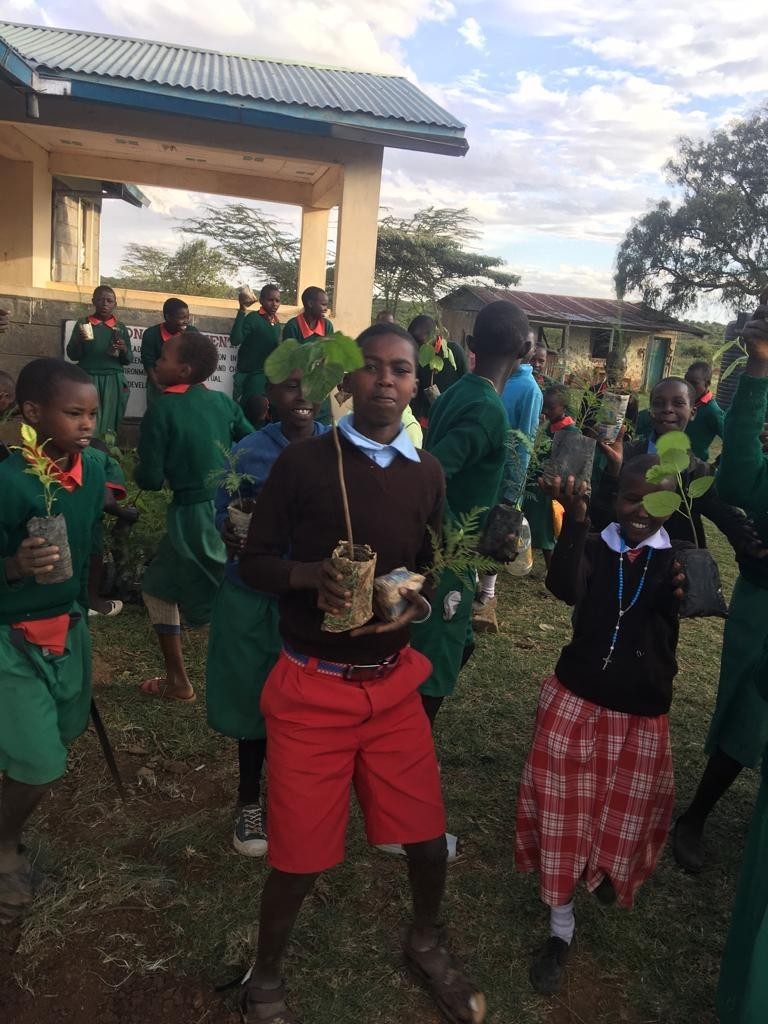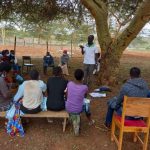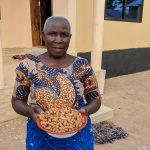Right from the start, Biotisho was evidently a vast and ambitious program. What with the intention of reaching three thousand adolescents in Samburu Central!
1 . The whole school approach enabled the program to reach a critical mass of adolescents.
While it would have seemed reasonable, under those circumstances, to work with small samples of the target population, the program’s stated intention to reach a critical mass of adolescents would have been defeated. Esther Kariuki, the Biotisho Program Manager at Centre for Behaviour Change Communication (CBCC)
Africa, took time to elaborate: “Initially, the program reached only members of the Health and 4-K clubs. In our planning we hadn’t realized that the process wouldn’t be reaching the masses. So the decision was made to cascade it to the entire population of pupils, what we call whole school approach.
The clubs’ members became the channels for reaching the rest of the school population. CBCC is the program’s implementing partner in its collaboration with the funding agency UNICEF, the Kenya government’s Ministry of Health, MoEST and MoALF.

2. Whole school approach perfectly dovetailed with the curriculum.
Such a shift in approach, doubtless, put more pressure upon teachers and pupils. “Yes we were presented with a logistical nightmare: how do you get the teachers to carry the added commitment on top of their packed classroom work? CBC is already a heavy curriculum. Then voila! We found that the teachings could easily integrate with the school curriculum. The teachers could inject the messages in their subjects. We also incorporated the use of facility-based health workers to be technical mentors.”
Organically almost, Biotisho seemed to provide answers to its own problems. The team learnt that the government had introduce a mentorship dimension to learning in schools. Since Biotisho is intrinsically a mentorship program, it just seemed to dovetail naturally into the government’s plans. That, as it happened, was right down Biotisho’s alley.
“CBCC’s initial research into defining the problem of nutrition found the causes to be multiple,” Esther explains. “For instance, if family members have low awareness of what constitutes a diversified diet, they were more likely to eat poorly, putting the members at risk of malnutrition. If they don’t have means of accessing diversified diet through production or purchasing, they tended to the same result. So, we opted for a more integrated process, the whole school approach to ensure reach of critical integrated nutrition messages to the adolescents so as to make them positive influencers and nutrition champions within their homes.”
To more comprehensively understand the reasons for adopting the whole school approach, one has to look at the range of interventions planned. They included a 3-day training of head teacher, Board of Management (BOM) members, health, guidance and counselling, and classroom teachers on an integrated package for adolescent services and information. Further, the trained teachers got equipped with job aids – talking books, boards and posters among others – for disseminating the adolescent health and nutrition messages. Service Provider Counselling Guides and ‘Kijana Mchangamfu’ booklets for the pupils were also availed. Health workers from the nearby health centres were also connected to the schools to provide health education sessions and services to the adolescents during break times or after day’s formal lessons.
Dormant 4-K clubs were resuscitated, and grades 4 to 8 pupils were enrolled into the target group to be reached with key messages. These messages dwelt on such topics as the importance of dietary diversity, nutrient needs of an adolescent, and the establishment and maintenance of a kitchen or school garden, among other messages. Further, the project staff linked the 4-K Club members with the Ward Agricultural Officer (WAO) in the Department of Agriculture. Still, these were just a few of the raft of interventions unleashed as the program took root.

The Biotisho project sought to encourage adolescents to gain interest and responsibility for their nutrition and well-being. This propelled the project to design an innovative social behaviour change campaign dubbed ‘Mainyotto Lelero-ai’ meaning ‘Young people, Light your Fires’. This campaign was founded on Four Fires of Freedom, Victory, Wisdom and Courage that were intended to empower the adolescents with key information and services that would help in dealing with malnutrition among other challenges facing them. “It might be difficult to convince adolescents that a change in diet would do them good. However, when you challenge them to ‘changamka’ (arise and take charge), it speaks to their desire to control their destiny,” said Esther.
Why did the whole school approach work so effectively?
One reason is that it incorporated other stakeholders besides the health and 4-K clubs, thereby substantially enhancing the program’s reach of more students. This increased its impact on behaviour change around the key health and nutrition practices. Additionally, the approach easily reaching a critical mass of vulnerable adolescent populations made it a cost- efficient and a scalable strategy. The end result is that the program reached 2,000 adolescents. Considering its initial reach within four primary schools through the 4-K and Health clubs was a comparatively tiny 382 pupils, this newly adopted approach has been successful beyond expectations.



